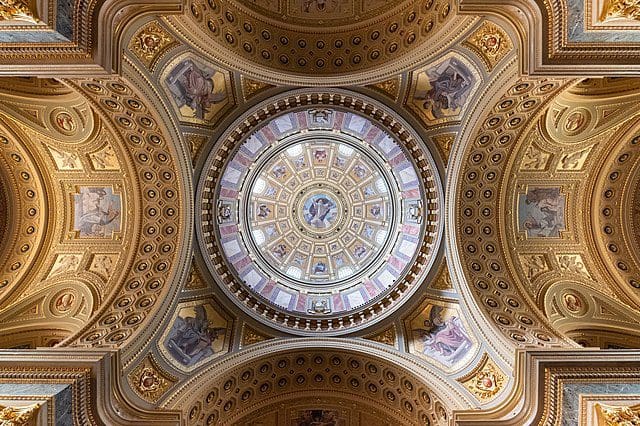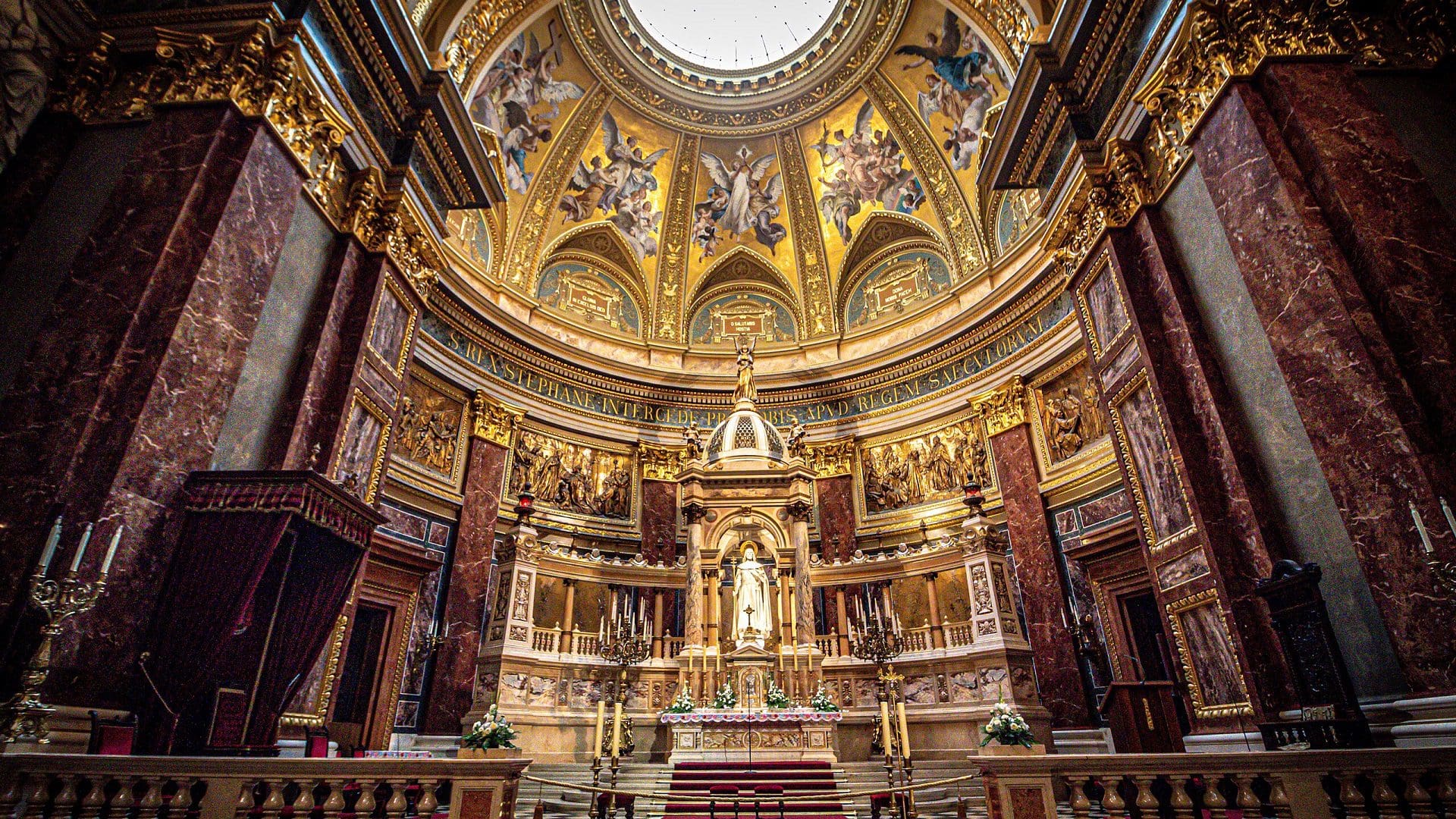Hungary celebrates the foundation of the Hungarian state on 20 August. The public holiday that is most famous for the fireworks that light up the night sky of Budapest falls on the same day as the Festival of the New Bread, and is also St Stephen’s Day, of the king who was the founder of Hungarian statehood. Ever 20 August, in a procession around the basilica that is consecrated to him, the Holy Dexter, the relic of the right hand of the canonised ruler is carried around in the centre of the capital city. The religious celebrations on 20 August are therefore centred around one of the most magnificent historic buildings of Budapest: Saint Stephen’s Basilica.
The Basilica is the largest church in the capital, and one of the most well-known sites in the entire country. On the site where the shrine stands now, a theatre used to be located that gave shelter to many people during the 1838 flood. The ones rescued then considered their survival a heavenly miracle, which gave rise to the idea of erecting a church on the spot. The campaign to raise funds for the construction of the church started in the 1810s. However, the actual construction of the building did not commence until the 1850s. The architectural design of the Basilica was based on the drawings of József Hild, one of the leading architects of the time who also designed cathedrals in the towns of Eger and Esztergom.
About half a year after Hild’s death, on 22 January 1868, the construction of the Basilica suffered a major setback when part of the dome and the dome drum collapsed,
both due to the defects in the used building materials and the uneven distribution of weight on the supporting pillars.
After the tragedy, the building of the church stopped for a year and commenced only once Miklós Ybl (known for designing the Hungarian Parliament Building, the Opera House, and the Várkert Bazár) prepared new designs. Albeit Ybl also did not live to see the building being completed, after his death, in 1891, the construction of the Basilica continued based on his plans. The original Hellenistic and Classicist style elements designed by Hild were replaced by a Neo-Renaissance style envisioned by Ybl.

Eventually, the construction of the church was officially concluded in 1905. The capstone was laid in 1906 in the presence of the King of Hungary, Francis Joseph I of Austria. The completed dome, which was completely rebuilt and redesigned after its 1868 collapse, is 96 metres (315 feet) tall, the same height as the Parliament’s rotunda. The number 96 is a reference to the date when Hungarians arrived at the Carpathian Basin in 895–896.
Its height also puts it among the top three tallest buildings in Budapest—next to the Parliament and the newly built MOL Campus. The Basilica has the capacity to host up to 8,000 people and therefore it is widely used not only for religious events but for philharmonic concerts as well.
As the location of the shrine was used as shelter during the 1838 flood, the Basilica played an important role during the troubled times of World War II too. The Hungarian National Archives, as well as many people in need, found shelter in its basement. While saving others’ life, the building itself was badly damaged.
Even though some restoration works were done right after the war, a major reconstruction effort was started only in 1983, and lasted for twenty years until 2003. During the reconstruction, the cathedral was made more tourist-friendly—elevators were added to the dome, sparing tourists from climbing 364 steps to the panorama terrace on the top to enjoy a breathtaking view of Budapest.
Soon after the completion of the building, the Basilica emerged as one of Budapest’s symbolic landmarks and the centre of Hungarian Catholicism.
In 1931, Pope Puis XI awarded the church the title ‘basilica minor’, which was then raised to the rank of ‘co-cathedral of the Archbishopric’ in 1993.
The Basilica is home to many artefacts. The most famous one of them is a relic that was placed in the cathedral in 1971: the Holy Right Hand of St. Stephen. Apart from the Holy Dexter, the grave of the world-famous football player Ferenc Puskás is also located inside the building.
Due to its significance, the church is not only popular among tourists, but has also hosted a series of domestic and international dignitaries. Pope John Paul II visited the Basilica in 1991 during the festival of King St Stephen. The Polish Pope was not the only one to have paid a visit to the Basilica—on his latest visit to Hungary between 28 and 30 April 2023, Pope Francis also gave a homily at the Basilica on the very first day of his papal visit, addressing a distinguished crowd of Hungarian churchmen.
Related articles:








